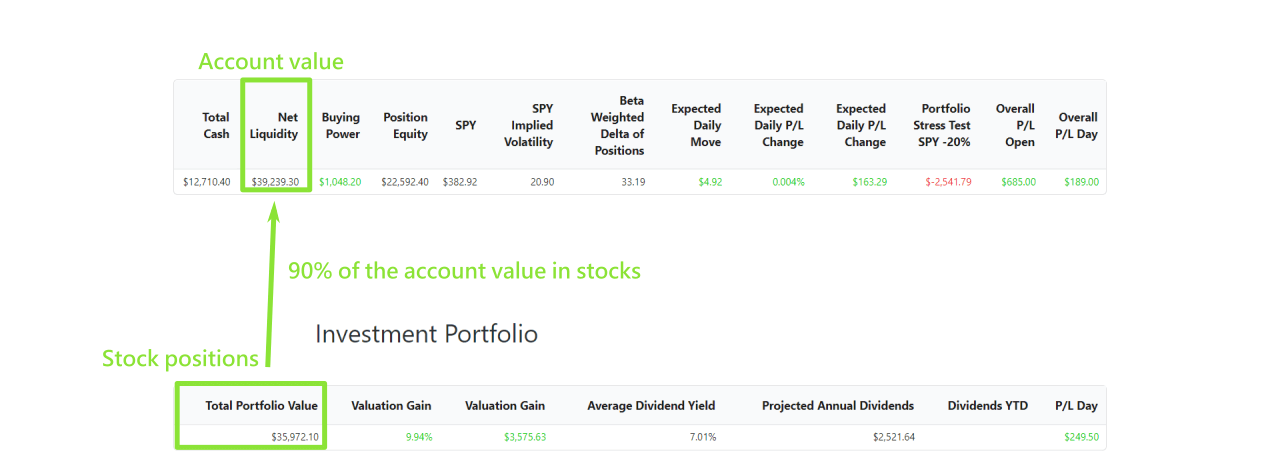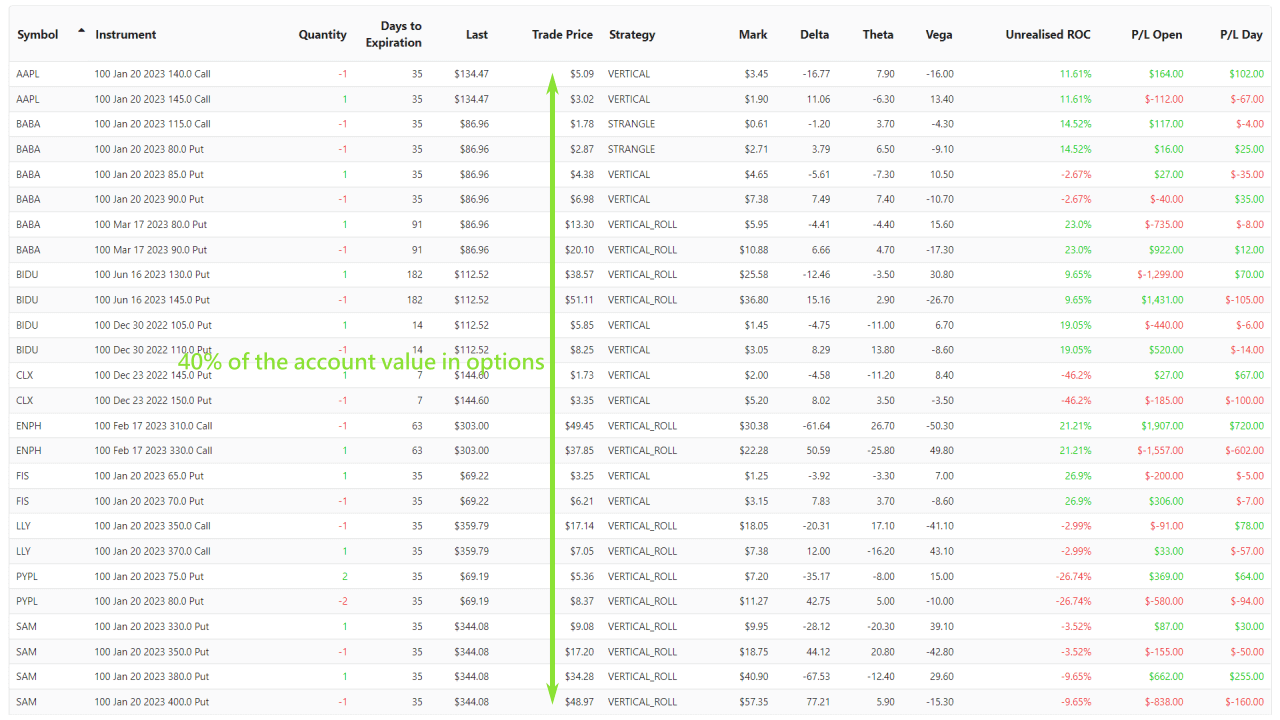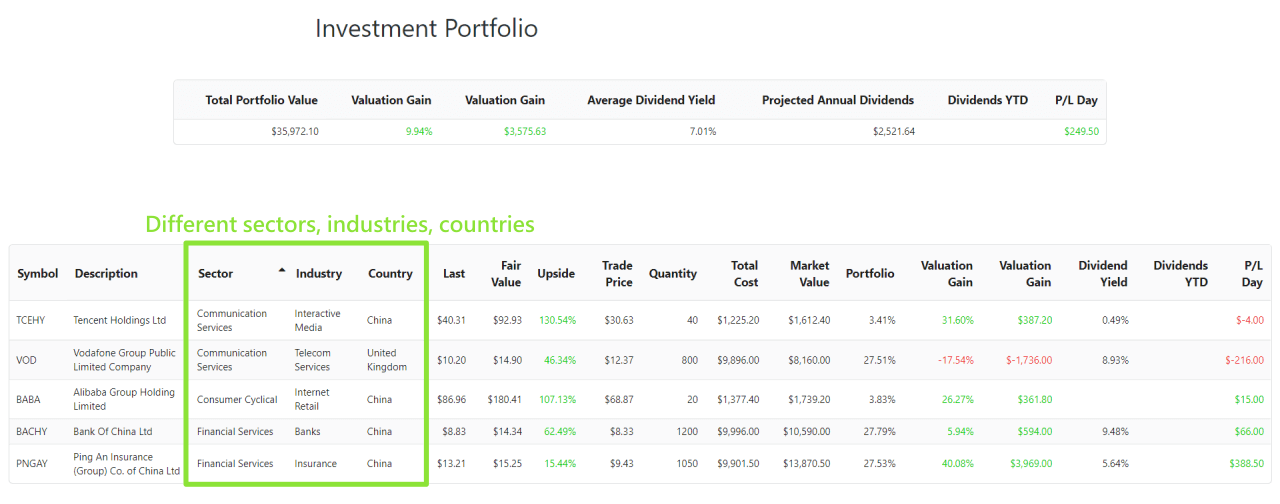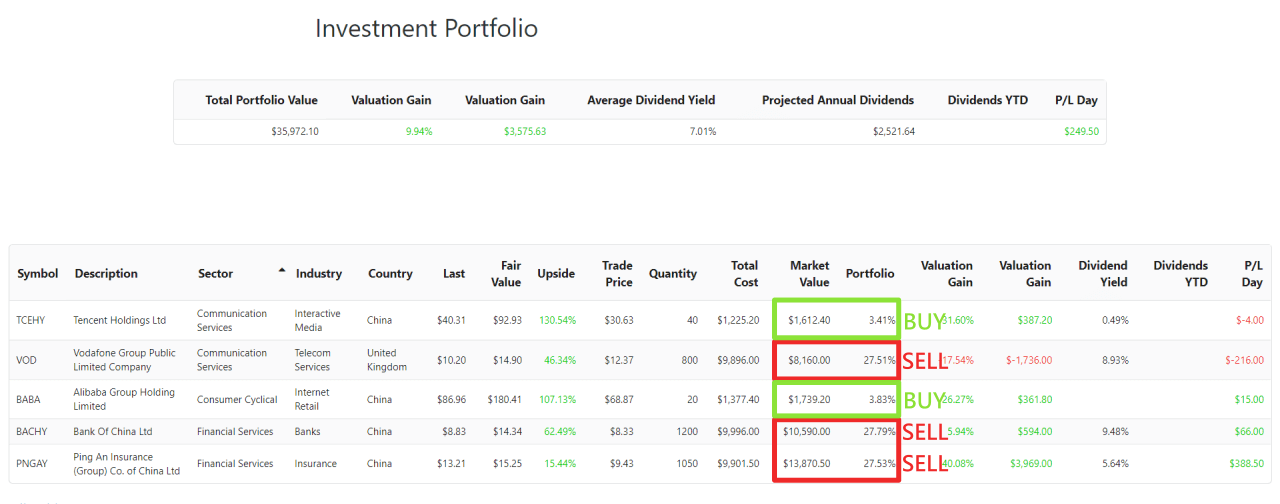A good way to gradually accumulate investment equity is by creating a portfolio management system. It can help you diversify your stocks and reduce investment risks.
We use SlashTraders' official account as an example to share a few of our favourite portfolio management strategies, to help you generate consistent profits.
Contents
What Is Portfolio Management?
Portfolio management is a system that combines multiple types of trading instruments or invests in many different sectors or industries at once. This reduces the risk of exposure to any concentrated underlying.
No matter which way the market goes, a diversified portfolio can reduce risks and become profitable in the long run.
Looking at SlashTraders' official trading account, we have a portfolio of around USD 40k in net liquidity. Most of our account liquidity is used for long-term investments.

When we find value stocks or high dividend-yielding blue-chip stocks, we will buy and hold them for a long time.
Within the USD 40k net liquidity, we use around USD 16k buying power to trade options to take advantage of short-term market fluctuations. Depending on different technical analysis results we trade short Strangles in neutral-trending stocks, or sell Credit Spreads when we anticipate large volatility soon.

You might be interested in why we have a ratio between stocks and options like this:
Stocks 2:1 options
Options trading has much greater risks than stock investing, as options have a time limit to turn a profit when the contract expires, while a losing stock investment can patiently wait for the stock price to rebound.
So we limit the amount of options trading to reduce the risks of our portfolio, while using the stocks for long-term growth.
What Is Asset Allocation?
Asset allocation is spreading the risk of the portfolio by splitting the investment capital across multiple different stocks. Even when one stock crashes, the whole portfolio shall not suffer a lot.
Key Points to Asset Allocation
Apart from buying value stocks with huge Upside potential and high-yield dividend stocks, our portfolio also invests in different Sectors, Industries and Countries, or even invest in real estate.

If any Industry, Sector or a single Country goes into recession, our overall portfolio shall remain profitable in the long run.

What Is Rebalancing?
Rebalancing is when we readjust the relative sizes of the stock positions after the stock prices have changed. The act of rebalancing usually leads to:
- Selling high-value positions.
- Buying low-value positions.
How Rebalancing Works
The advantage of rebalancing is it helps us make systematic decisions on buying low and selling high. Thus reducing the emotional toll on trading.
At the next rebalancing cycle, we can:
- Sell high market value positions like VOD, BACHY, and PNGAY.
- Buy low market value positions like TCEHY and BABA.

The relative values of each position should reset to the original setup after rebalancing, so the portfolio will not lean heavily towards any single stock, and diversify the risks.
Now you know a few basic portfolio management strategies, you can study SlashTraders' trading account to help you diversify risks and systematically readjust your positions to comfortably accumulate wealth.

